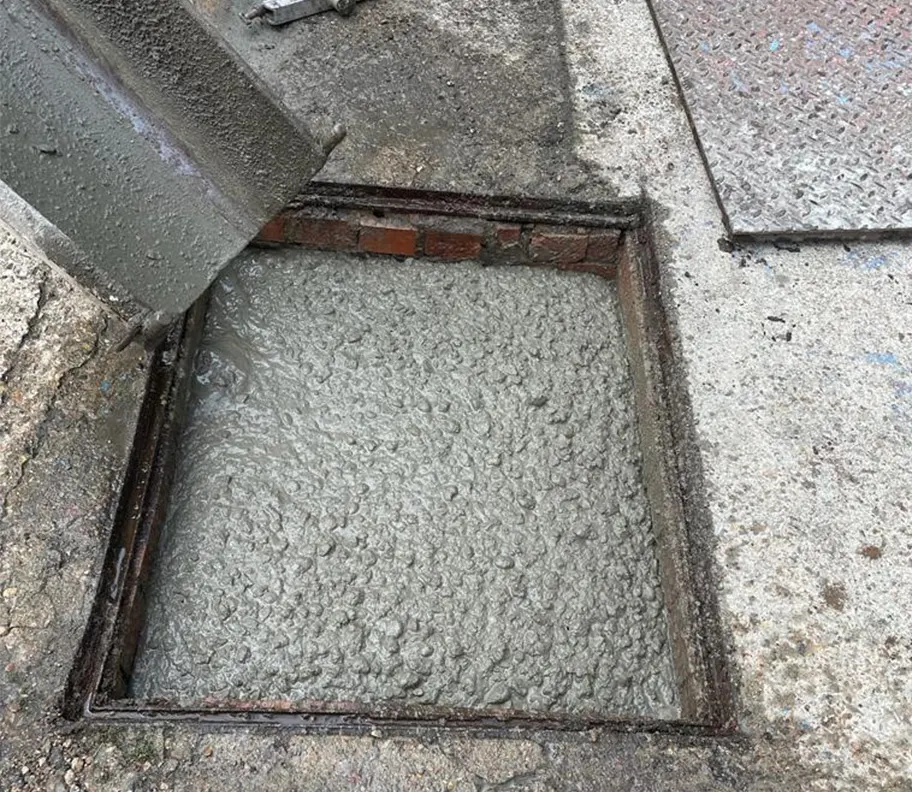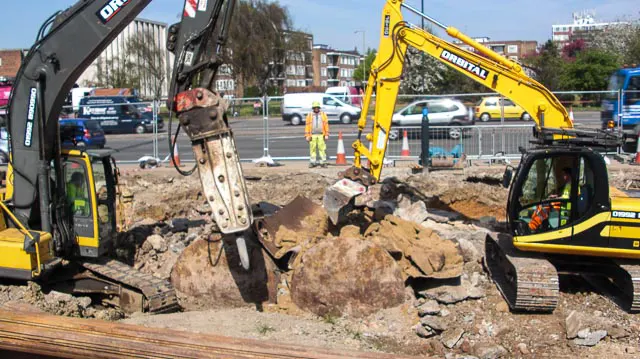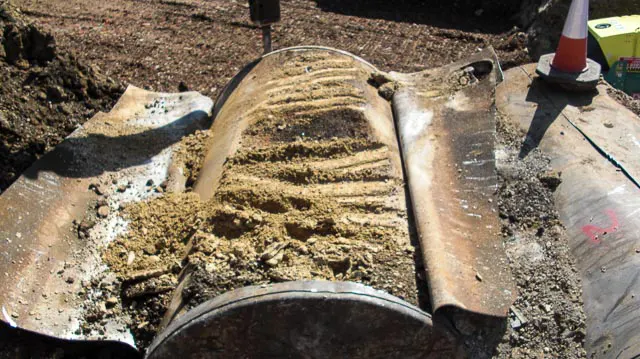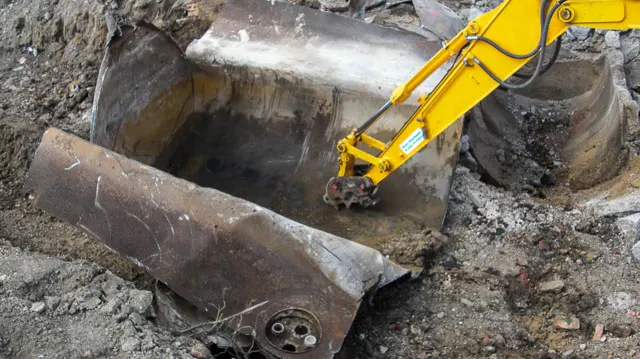It is often more convenient for land owners who are decommissioning sites to leave underground fuel storage tanks in place, making them safe by filling them with a solid foam or concrete slurry. This is why we operate Solid Filled Tank Removal.
However, if a future owner wishes to develop the land with buildings that require foundations, those solid filled tanks will need to be removed safely. This is where we can help, with our Removal of Solid Filled Tanks service.
Tank Excavation
Before the tank can be excavated and the metal taken for recycling, the tank has to be opened and the filling removed to be taken to a licensed landfill site.
Although solid filled tanks should be safe in theory, proper precautions have to be taken when opening them. If the filling was not carried out properly the material could have settled, leaving a space where explosive fumes could accumulate. In some cases the filling material itself can give off formaldehyde gas, so different precautions for site and personnel safety have to be taken depending on the filling used.

Fuel tank specialists DP Fuel Tank Services has the expertise and experience to carry out the removal and disposal of all types of petrol, diesel, oil and other types of storage tanks, including the removal of industrial oil tanks, in a safe and efficient manner.
Oil company policy dictates that redundant petrol tanks are not sold for re-use. The system of documentation used by DP Fuel Tank Services identifies the tank and its eventual destruction by smelting.
What are solid filled tanks, and why are they left in place during site decommissioning?
Solid-filled tanks are underground fuel storage tanks that are made safe by filling them with solid foam or concrete slurry. Landowners often choose to leave these tanks in place during site decommissioning for convenience and safety. However, if future development plans require the removal of solid-filled tanks, it becomes necessary to ensure their safe removal and disposal.
What is the process for removing solid filled tanks, and what precautions are taken when opening them?
Before removing solid-filled tanks, they must be excavated, and the filling material must be removed and disposed of in a licensed landfill site. While solid-filled tanks are generally considered safe, precautions must be taken when opening them. If the filling was not carried out properly, there may be spaces where explosive fumes could accumulate. In some cases, the filling material itself can emit formaldehyde gas, necessitating different safety precautions for both the site and personnel, depending on the type of filling used.


